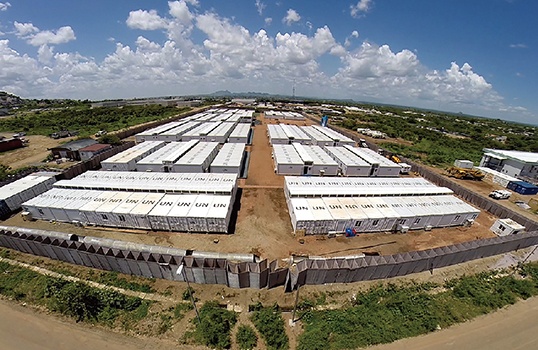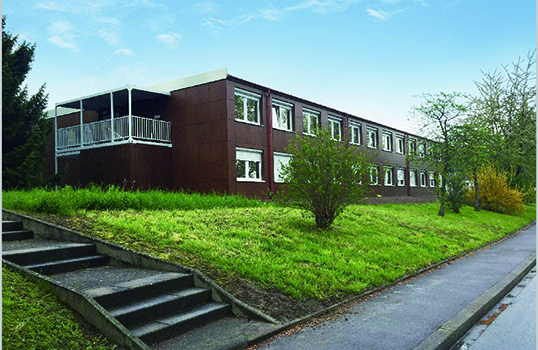A flatpack container is a versatile and innovative solution for various construction and storage needs. These containers, also known as modular containers, offer numerous advantages, making them increasingly popular in the construction industry, for both residential and commercial applications. The benefits of a flatpack container range from cost savings and efficient transportation to ease of assembly and flexibility in design. This article delves into the main benefits of using it, highlighting its modular nature, low shipping costs, and economic advantages.
1. Modular Housing and Quick Assembly
One of the primary benefits of a flatpack container is its modular design, which allows for quick and efficient assembly. These containers are designed to be easily transported and assembled on-site, providing a fast solution for housing and other structures.
Modular Design
The modular design of a flatpack container means that each unit is prefabricated and can be easily connected to other units to create larger structures. This modularity offers several advantages:
- スケーラビリティ: Structures can be easily expanded by adding more containers, allowing for scalability based on changing needs.
- Flexibility: The containers can be configured in various ways to suit different purposes, whether for residential housing, office spaces, or storage facilities.
- Standardization: The use of standardized modules ensures consistency in quality and dimensions, simplifying the construction process.

Quick Assembly
The ease and speed of assembly are significant benefits of flatpack containers. Key features that contribute to quick assembly include:
- Pre-Fabrication: The containers are manufactured and partially assembled in a factory setting, ensuring precision and reducing the time needed for on-site construction.
- Simple Tools: Assembly requires only basic tools, and the process can be completed by a small team without the need for specialized skills.
- Minimal Site Preparation: Unlike traditional construction methods, it requires minimal site preparation, further speeding up the installation process.
2. Low Shipping Costs
Another notable advantage of a flatpack container is its low shipping cost. The design of these containers allows them to be packed efficiently, reducing transportation expenses significantly.
Efficient Packing
They are designed to be disassembled into flat components, which can be stacked and packed tightly. This efficient packing offers several benefits:
- Space Optimization: Up to four flatpack containers can be packed into the size of a standard 20-foot shipping container. This optimization maximizes the use of available space and reduces the number of trips required for transportation.
- Reduced Shipping Volume: By minimizing the volume of each shipment, transportation costs are kept low. This is particularly advantageous for international shipping, where costs are often calculated based on volume.
Cost Savings
The reduction in shipping costs translates to significant cost savings for businesses and individuals using it. These savings can be redirected towards other aspects of the project, such as site development or interior customization. Additionally, the lower shipping costs make it a viable option for remote or inaccessible locations, where traditional construction materials would be prohibitively expensive to transport.
3. Economic Affordability
Flatpack containers are economically affordable, making them an attractive option for various applications. Their cost-effectiveness is due to several factors, including lower construction costs, reduced labor expenses, and energy efficiency.
Lower Construction Costs
The construction costs associated with them are significantly lower than those of traditional building methods. This affordability is due to:
- Prefabrication: The majority of the construction work is completed in a factory setting, where materials can be purchased in bulk and labor costs are lower. This prefabrication process reduces overall construction expenses.
- Standardization: The use of standardized components and assembly processes streamlines construction, reducing waste and inefficiencies.
- Minimal Foundation Work: They require minimal foundation work, which further reduces construction costs.
Reduced Labor Expenses
The simplicity of assembling a flatpack container results in reduced labor expenses. Key factors contributing to these savings include:
- Ease of Assembly: The assembly process is straightforward and can be completed quickly, reducing the amount of labor required.
- Small Teams: A small team of workers can efficiently assemble a flatpack container, eliminating the need for large construction crews.
- Lower Skill Requirements: The process does not require specialized skills, allowing for the use of less expensive labor.
Energy Efficiency
They are designed with energy efficiency in mind, providing long-term cost savings on energy bills. Features that enhance energy efficiency include:
- Insulation: The containers are often equipped with high-quality insulation, which reduces heating and cooling costs by maintaining a stable internal temperature.
- Eco-Friendly Materials: They are constructed using eco-friendly materials, which not only reduce the environmental impact but also qualify for green building incentives and tax credits.
- Energy-Efficient Appliances: The modular design allows for the integration of energy-efficient appliances and systems, further reducing energy consumption and costs.

4. Additional Benefits
Beyond the primary advantages of modular design, low shipping costs, and economic affordability, flatpack containers offer several additional benefits that make them a versatile and practical choice.
Durability and Strength
They are built to last, offering durability and strength that can withstand harsh conditions. These containers are often made from robust materials such as steel, providing excellent resistance to weather, pests, and other environmental factors. This durability ensures a long lifespan and reduces maintenance costs over time.
Portability and Flexibility
The portability of flatpack containers is another significant benefit. These containers can be easily transported to different locations, making them ideal for temporary structures, disaster relief housing, and remote work sites. Their flexibility allows them to be disassembled, relocated, and reassembled as needed, providing a versatile solution for changing needs.
Customization Options
They offer a wide range of customization options, allowing for tailored solutions to meet specific requirements. Customization options include:
- Interior Layouts: The interior of a flatpack container can be customized to suit different purposes, such as offices, living spaces, or storage units.
- Exterior Finishes: Various exterior finishes are available to enhance the appearance and functionality of the containers, including cladding, paint, and roofing options.
- Additional Features: Optional features such as windows, doors, plumbing, and electrical systems can be integrated into the design, providing a fully functional and comfortable space.
Environmental Benefits
The environmental benefits of they are also noteworthy. These containers promote sustainability in several ways:
- Recycled Materials: Many flatpack containers are made from recycled materials, reducing the demand for new resources and minimizing waste.
- Reduced Carbon Footprint: The efficient transportation and assembly process reduce the carbon footprint associated with traditional construction methods.
- Eco-Friendly Design: The use of eco-friendly materials and energy-efficient systems contributes to a more sustainable and environmentally friendly building solution.
結論
A flatpack container offers numerous benefits that make it an attractive option for various applications. Its modular design and quick assembly provide a fast and flexible solution for housing, office spaces, and storage facilities. The low shipping costs, achieved through efficient packing and reduced volume, result in significant cost savings. Additionally, the economic affordability, driven by lower construction and labor costs and enhanced energy efficiency, makes them a cost-effective choice for both residential and commercial projects.
The additional benefits of durability, portability, customization options, and environmental sustainability further enhance the appeal. These versatile and practical solutions are well-suited to meet the demands of modern construction, offering a reliable and efficient alternative to traditional building methods.
In conclusion, the advantages of flatpack containers make them an excellent choice for a wide range of applications, providing a cost-effective, efficient, and environmentally friendly solution for modern construction needs.
CIMC TLC|XLC|RYC is a leading manufacturer of flatpack containers and various other standard and special logistics equipment. With years of experience in the industry, it focuses on the design, production and distribution of high-quality innovative products that meet the specific needs of customers.
冷蔵コンテナ、コールドチェーン設備、コンテナ型設備統合、モジュール式建物など、高品質で革新的な物流設備が必要な場合、 CIMC TLC|XLC|RYC はあなたの最良の選択です。世界中のお客様からのお問い合わせを歓迎し、あなたと協力する機会を楽しみにしています。


